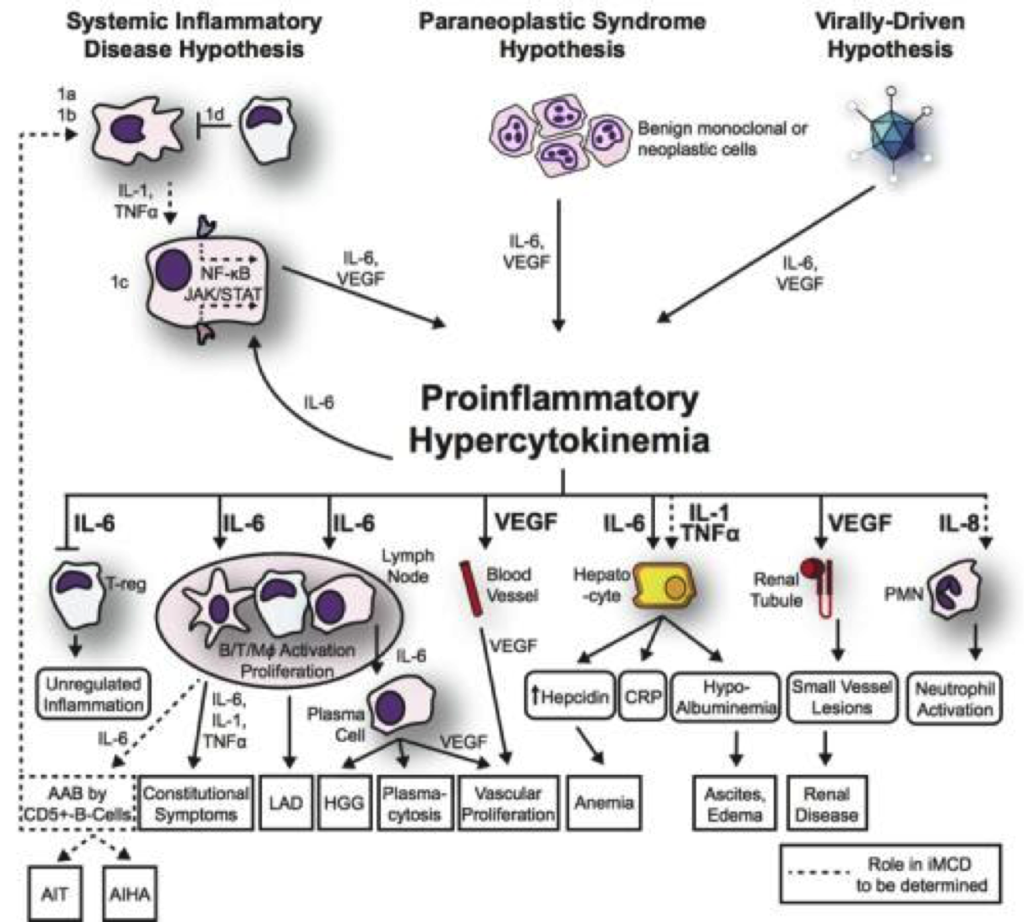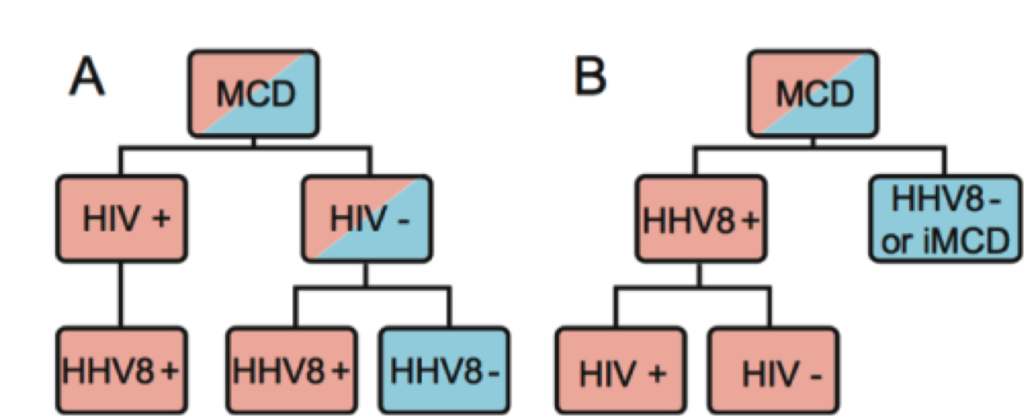7/15/2014 Multicentric Castleman disease (MCD) should be classified based on HHV-8-status and a new model of pathogenesis should be adopted according to Drs. David Fajgenbaum, Frits van Rhee, and Chris Nabel. The trio—all members of the CDCN—collaborated on a review article, recently published in the journal Blood, that synthesizes the results of 2,000+ previous studies. In addition to a new disease classification system that provides a common language for researchers and physicians, they propose a new model of pathogenesis for the potential causes of idiopathic MCD, in which HHV-8 is not responsible for disease. These contributions provide a new clarity of insight that will expedite further research into the diagnosis and treatment of Castleman disease.
Full text available here.

New concept of pathogenesis
Multicentric Castleman disease is traditionally considered as an atypical lymphoproliferative disorder involving “benign tumors” that secrete cytokines, such as Interleukin-6 (IL-6), that cause inflammation. However, Fajgenbaum et al. identified previous studies showing that the changes in lymph nodes in patients with MCD can be found in other diseases involving excessive inflammation as well. This suggests that the lymph nodes in MCD are not benign tumors, but rather a reflection of excessive inflammation produced by an as-yet undetermined cause. The authors go on to propose three hypotheses for what could be driving this cytokine-driven inflammation.
- A Systemic Inflammatory Disease Hypothesis involves autoimmunity.
- A Paraneoplastic Syndrome Hypothesis proposes that mutations inside or outside of the lymph nodes may cause constant cytokine release.
- A Virus Hypothesis involves an infection with another virus, distinct from the HHV-8 virus. This could be a virus that is already known, such as EBV or HHV-6, or a currently undiscovered virus.
New Subclassification System
The scientific community has used different terminologies to classify Castleman disease, causing confusion amongst researchers and slowing progress. Traditionally, MCD has been classified by HIV-status (A, below). However, HIV plays no role in MCD pathogenesis; it simply causes immunosuppression, which allows HHV-8 to cause infection that may lead to MCD. Given that HHV-8 is directly responsible for all cases of MCD in patients who are HIV-positive and some who are HIV-negative, the authors proposed a new classification scheme (B) that classifies MCD cases based on HHV-8-status, more accurately reflecting pathogenesis and response to treatments.

HHV-8-associated MCD
For an excellent overview of HHV-8-associated MCD, please see Tom Uldrick’s article, “Recent advances in Kaposi sarcoma herpesvirus-associated multicentric Castleman disease.” Curr Opin Oncol, 2012. Tom serves as a member of the Scientific Advisory Board of the CDCN. Click here to access the article and others in our database.
